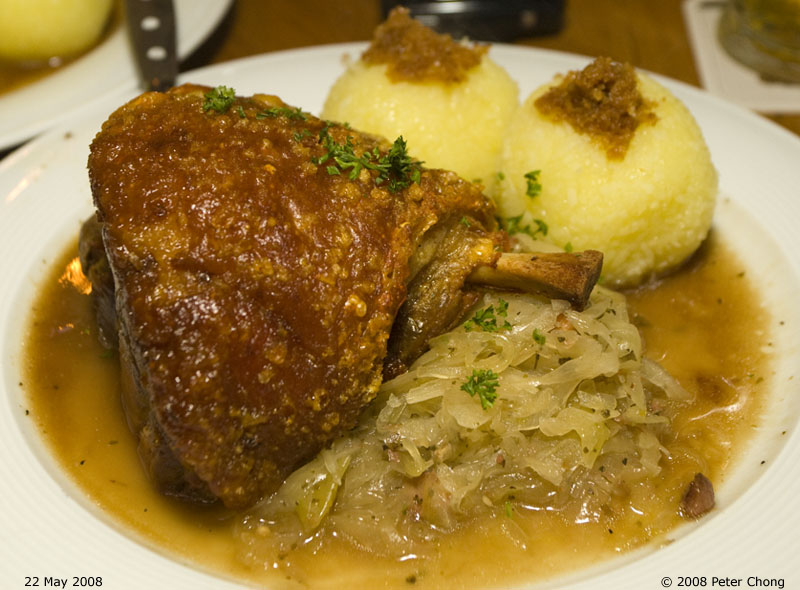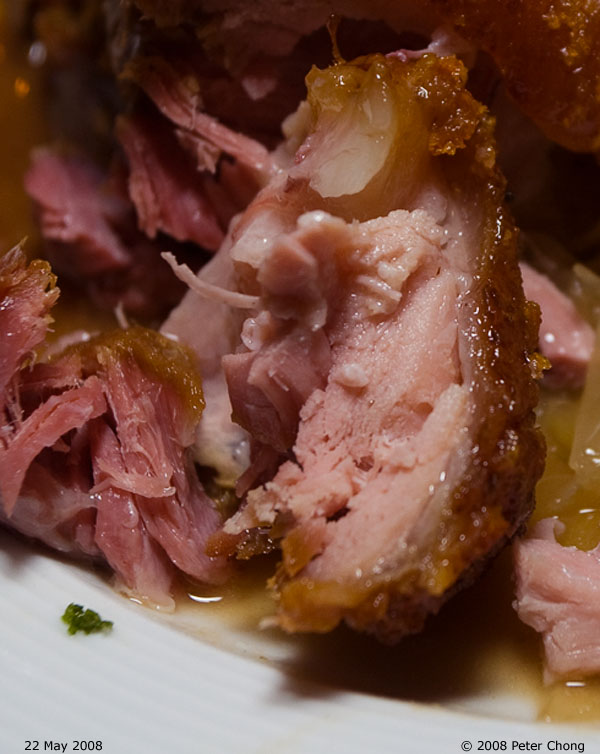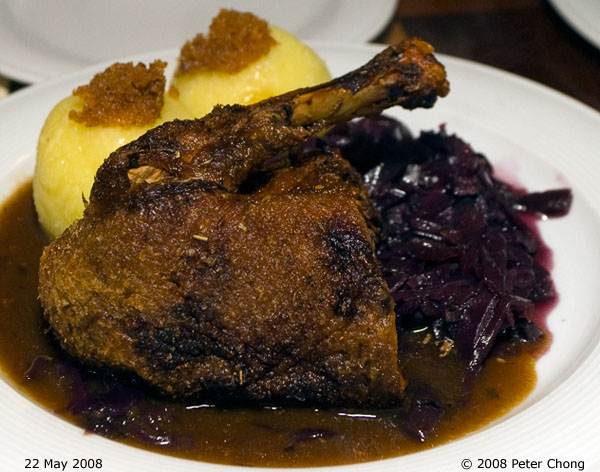In the beautiful German city of Dresden, a typical serving of this dish, done Saxon style can be found at the Radeberger Spezialhausschank. This is a micro-brewery of the famous Saxon beer - Radeberger, brewed in-premises. The entire restaurant looks like a river boat, both inside and outside. comprising of 3 floors of restaurant space...the ground level is the bar with two giant vats of beer being brewed. One floor up via a narrow ship's staircase leads to the main dining hall, and another set of stairs leads one to the roof terrase, which is level with Brülterrase for lovely al fresco dining.
A half liter glass of Radeberger is the correct way to start the meal.

Note the nice 1 inch of head...carefully measured by the bartender. The beer was very nice...slightly bitter, but very creamy, with strong hints of hops.
The Schweishaxe was served on a bed of sauerkraut and two Saxon potato dumplings.

The lower leg of a pig, known as a hock was used. As I understand it, the leg is braised in herbs and spices like carrots, celery, leeks for a long time to make the meat moist and tender. The long braising also allows the meat to absorb the flavours of the spices. The hock is then roasted at high heat in an oven. The roasting is to allow the fat to drip out of the meat. This can be batch processed early in the morning. On receiving an order, the skin is scored, and basted in a sauce of beer and the remainder of the braising liquid. And then deep fried to create a crisp crackling, and a crispy golden crust.

See the crispy crackling, and moist, tender, fall off the bone meat. In between, typically one would find connective tissue (good source of collagen) and fat. But as the hock has been roasted prior to deep frying, the fat has melted, and drained off.
The Saxon dumplings are made from potato, and have a springy, spongy texture. Sauerkraut is made from shredded cabbage, fermented by various types of latic acid. Sauerkraut, in German meaning sour cabbage, is a typical German dish, much like kimchee in Korea and is a good accompaniment to any meal. Especially so for heavy, greasy meats like schweinsaxe and sausages, where the sour taste of the sauerkraut helps cut the grease, and relieve the umami sensors from firing all the time.
We also had a serving of duck confit, done German style.

In contrast to the typical slow cooked French confit du canard where a leg of duck is slowly cooked under a slow and low fire for a long time, in its own fat and juices, the Saxon style is to make the confit similar to how they do their schweinsaxe. The result is a crispy skin, crispy outer, and very moist, tender meat.
Interesting meal, but very heavy (lots of meat).
Radeberger Spezialhausschank, Terrasenufer 1, Dresden. Entry also possible to top floor terrace directly from Brülterrase.
Photonote: getting white balance right is a big challenge here. Apologies for gory colour. The restaurant was dark, and walls are timber - rich brown...completely wreck havoc on the color temperature. I used flash, reflected off a plate, but still no go. Should have done the white balance from Pringles cap thingie.
1 comment:
Makes me drool now....looking at the Scheinhaxe and the sauercraut and the duck confit.
http://www.jencoolcook.blogspot.com
Post a Comment